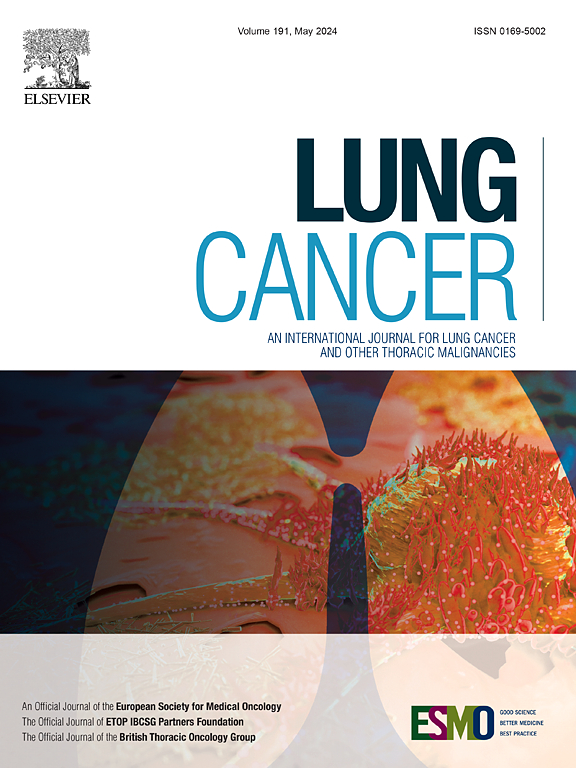Survival benefit and potential markers of chemotherapy for elderly and poor performance status patients with advanced non-small cell lung cancer: Results from the Japanese Joint Committee of lung cancer registry database
IF 4.5
2区 医学
Q1 ONCOLOGY
引用次数: 0
Abstract
Introduction
Data on chemotherapy for elderly, poor performance status (PS) non-small cell lung cancer (NSCLC) are clinically important but insufficient due to their exclusion from most interventional studies. This study aims to explore actual treatment status and prognosis, as well as factors predicting patients who may benefit from chemotherapy.
Materials and Methods
Advanced NSCLC patients aged ≥75 years with PS 2–3 and no/unknown driver mutations were included. In each of PS2 and PS3 cohorts, we compared the overall survival (OS) of the chemotherapy and Best Supportive Care (BSC) group after adjusting by inverse probability weighting (IPW) method, and analyzed prognostic factors using the COX proportional hazards model. We defined the patients with body weight loss ≥5 % within 6 months as cancer cachexia in this study.
Results
This study included 282 patients (Chemotherapy;107, BSC;175) in PS2 cohort and 230 patients (Chemotherapy;39, BSC;191) in PS3 cohort. In both PS2 and PS3 cohorts, IPW-adjusted OS was significantly longer in the chemotherapy group than in the BSC group (HR 0.42 [95 % CI 0.32–0.55] and 0.56 [95 % CI 0.41–0.75], p < 0.001 and 0.003, respectively). Multivariate analysis showed that cancer cachexia and stage IV were significantly associated with OS in PS2 cohort. For patients with cancer cachexia in PS3 cohort, chemotherapy did not prolong OS (HR 0.81 [95 % CI 0.45–1.45], p = 0.530).
Conclusion
Chemotherapy might provide a survival benefit even for elderly, poor PS NSCLC patients. In vulnerable PS 3 patients, cancer cachexia may be useful in predicting patients who may benefit from chemotherapy.
求助全文
约1分钟内获得全文
求助全文
来源期刊

Lung Cancer
医学-呼吸系统
CiteScore
9.40
自引率
3.80%
发文量
407
审稿时长
25 days
期刊介绍:
Lung Cancer is an international publication covering the clinical, translational and basic science of malignancies of the lung and chest region.Original research articles, early reports, review articles, editorials and correspondence covering the prevention, epidemiology and etiology, basic biology, pathology, clinical assessment, surgery, chemotherapy, radiotherapy, combined treatment modalities, other treatment modalities and outcomes of lung cancer are welcome.
 求助内容:
求助内容: 应助结果提醒方式:
应助结果提醒方式:


